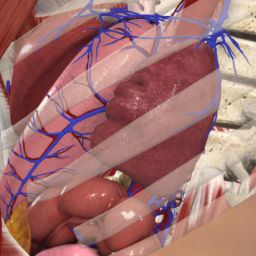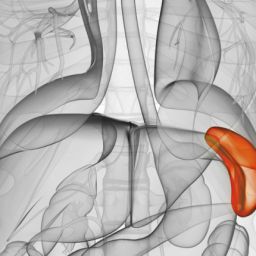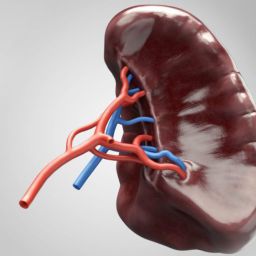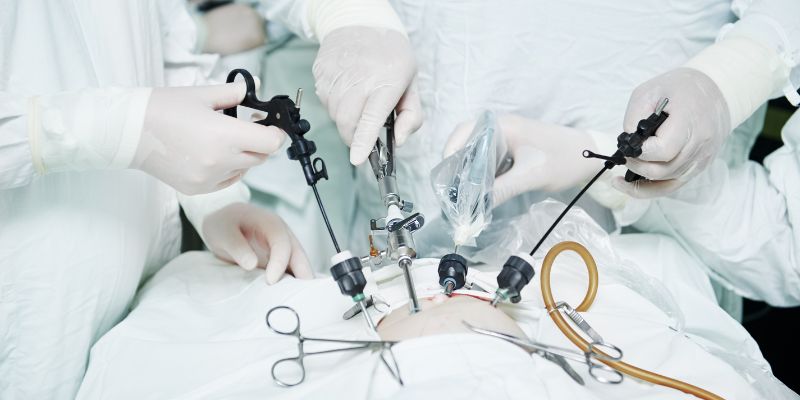
1. The Link Between Splenectomy, Anemia, and Iron Deficiency
After splenectomy, the body faces several challenges related to blood cell production and function. The spleen plays an important role in filtering out old or damaged red blood cells, recycling iron, and storing healthy blood cells. Its removal can disrupt this process, leading to complications such as anemia and iron deficiency.
a. How Splenectomy Affects Blood Cells
The spleen is responsible for removing worn-out red blood cells from the bloodstream. With the spleen absent, other organs, primarily the liver, take over some of these functions. However, the liver does not fully replicate the spleen’s ability to remove old blood cells and regulate iron stores. This imbalance can lead to an increase in the number of abnormal red blood cells circulating in the bloodstream, which can contribute to anemia.
Additionally, the spleen is involved in the production and storage of white blood cells and platelets. Following splenectomy, some individuals experience a condition called auto-splenectomy, where the bone marrow compensates for the absence of the spleen, sometimes leading to an overload of platelets, but this can also disrupt the balance of other blood components.
b. Iron Deficiency Post-Splenectomy
Iron plays a key role in the production of hemoglobin, the protein in red blood cells that carries oxygen throughout the body. The spleen contributes to maintaining adequate iron levels by recycling iron from old blood cells. Without the spleen, iron recycling becomes less efficient, leading to a higher risk of iron deficiency. This, in turn, can cause or exacerbate anemia, making it more difficult for the body to produce healthy red blood cells.
2. Symptoms of Anemia and Iron Deficiency After Splenectomy
Recognizing the symptoms of anemia and iron deficiency after splenectomy is essential for early intervention. The following signs are often associated with these conditions:
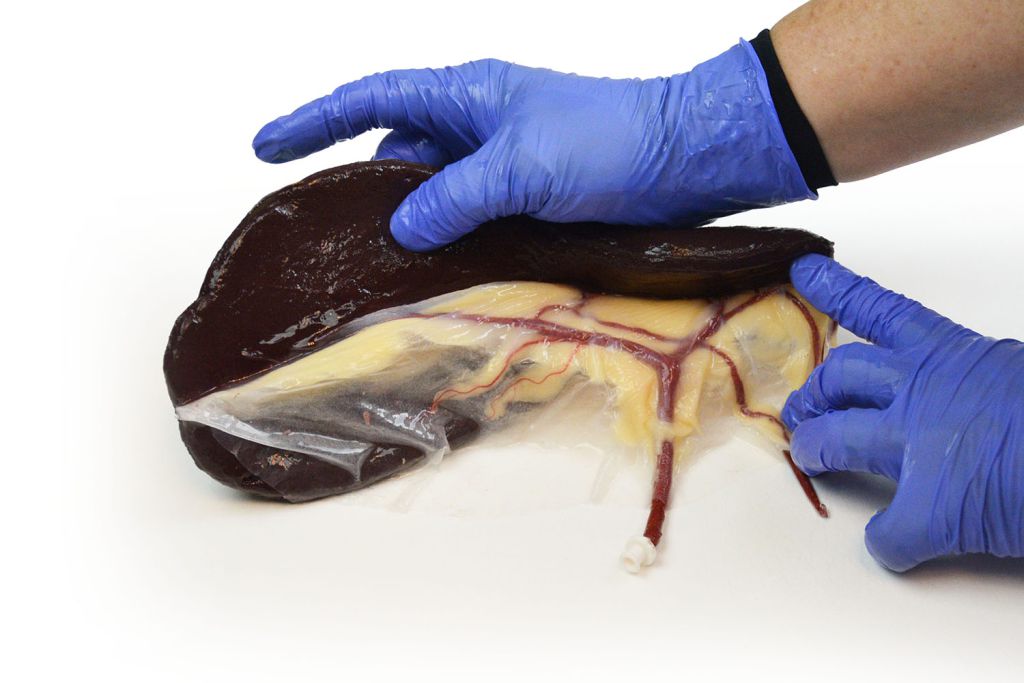
- Fatigue: One of the most common symptoms of anemia, fatigue occurs when the body doesn’t have enough healthy red blood cells to carry oxygen to tissues.
- Paleness: Individuals with anemia often look paler than usual due to a lack of red blood cells in the bloodstream.
- Shortness of breath: Anemia can reduce the oxygen-carrying capacity of the blood, making even mild physical exertion more tiring.
- Dizziness or lightheadedness: This may occur due to reduced blood flow to the brain, resulting from insufficient red blood cells.
- Cold hands and feet: Anemia can affect circulation, leading to a sensation of coldness in the extremities.
- Iron Deficiency Symptoms: These may include brittle nails, hair loss, headaches, and irritability, which occur as a result of low iron levels in the body.
If any of these symptoms appear after splenectomy, it’s essential to seek medical advice for proper diagnosis and treatment.
3. Preventive Measures to Combat Anemia and Iron Deficiency After Splenectomy
While the risks of anemia and iron deficiency following splenectomy cannot be entirely eliminated, there are several strategies that can help minimize these risks and improve overall health.
a. Iron Supplements
One of the most common treatments for iron deficiency is the use of iron supplements. After splenectomy, your doctor may recommend taking oral iron supplements to help boost your iron levels and prevent anemia. Iron supplements can improve hemoglobin levels and support the production of red blood cells.
Iron supplements come in various forms, including tablets, liquids, and chewables. It’s important to follow your doctor’s instructions regarding dosage and duration. Too much iron can lead to side effects like constipation or stomach upset, so balancing iron intake is key. In some cases, intravenous iron therapy may be necessary for individuals who cannot absorb oral iron supplements effectively or for those with more severe iron deficiency.
b. Diet and Nutrition
A balanced diet rich in iron is essential for preventing iron deficiency and managing anemia. After splenectomy, it is particularly important to consume iron-rich foods, which can help compensate for the spleen’s reduced ability to recycle iron. Some iron-rich foods include:

- Red meat: Beef, lamb, and pork are excellent sources of heme iron, which is more easily absorbed by the body.
- Poultry and fish: Chicken, turkey, and fish such as salmon or tuna provide heme iron as well.
- Leafy greens: Spinach, kale, and Swiss chard are rich in non-heme iron.
- Legumes and beans: Lentils, chickpeas, and kidney beans are great sources of non-heme iron.
- Fortified cereals: Many breakfast cereals are fortified with iron, making them an easy addition to your diet.
- Nuts and seeds: Almonds, pumpkin seeds, and sunflower seeds are good sources of iron.
In addition to consuming iron-rich foods, it’s important to include vitamin C in your diet. Vitamin C can enhance the absorption of non-heme iron (from plant-based sources) when consumed in combination with iron-rich foods. Foods high in vitamin C include oranges, strawberries, bell peppers, and broccoli.
c. Monitoring Blood Levels
Regular monitoring of blood levels after splenectomy is essential for detecting anemia and iron deficiency early. Your doctor will likely schedule periodic blood tests, including a complete blood count (CBC) and serum ferritin levels, to assess the health of your red blood cells and iron levels. If iron deficiency or anemia is detected, your healthcare provider will adjust treatment accordingly.
By keeping track of your blood work, you can catch any issues before they become severe, allowing for timely interventions that can improve your quality of life.
d. Avoiding Excessive Blood Loss
Since splenectomy may lead to an increased risk of bleeding in some patients, it’s important to be cautious of any factors that could cause excessive blood loss, which could exacerbate anemia. Avoiding injuries, managing blood pressure, and promptly addressing any signs of internal bleeding are crucial in maintaining healthy blood levels post-splenectomy.
e. Vitamin and Mineral Supplements
In addition to iron supplements, patients may require other vitamin and mineral supplements to maintain optimal health after splenectomy. For instance, vitamin B12 and folic acid are essential for red blood cell production, and deficiencies in these nutrients can lead to anemia. Taking a comprehensive multivitamin or specific supplements, as prescribed by your healthcare provider, can ensure you are meeting all of your nutritional needs.
f. Staying Hydrated
Dehydration can exacerbate the effects of anemia and iron deficiency by thickening the blood and making it harder for the body to circulate oxygen efficiently. Drinking adequate water throughout the day ensures that your blood can flow freely and supports overall bodily functions. Adequate hydration is especially important after surgery to help with recovery and maintain good circulation.
Anemia and iron deficiency are common concerns for individuals who have undergone splenectomy. The absence of the spleen impacts the body’s ability to regulate blood and iron levels, leading to potential risks such as fatigue, weakness, and compromised oxygen delivery to tissues. However, with proper preventive measures, including iron supplementation, a balanced diet, regular monitoring of blood levels, and appropriate medical interventions, individuals can manage these risks effectively.
By adopting a proactive approach to health, patients can significantly reduce their chances of developing anemia and iron deficiency after splenectomy and lead healthy, fulfilling lives. It’s important to work closely with healthcare providers to develop a personalized plan that addresses specific needs, ensuring the best possible outcomes following the surgery.

